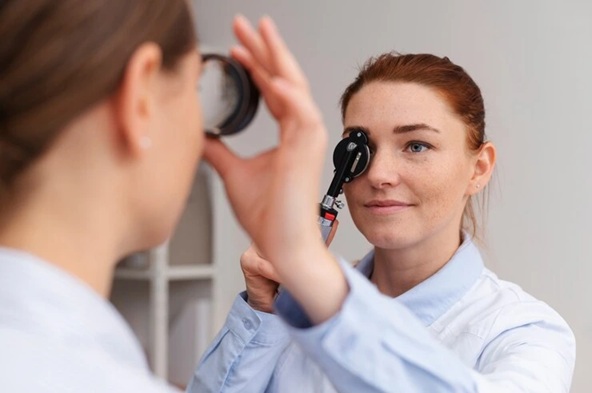Age-related floater proliferation stems from progressive vitreous degeneration involving collagen breakdown, gel liquefaction, and protein aggregation that accelerate throughout the natural ageing process. These degenerative changes transform the once-uniform vitreous gel into a mixture of liquid and debris, creating increasingly visible shadows on the retina. Specialised nutritional support through vitreoushealth by macuhealth may help address some underlying factors contributing to vitreous ageing, though genetic predisposition and environmental factors also influence individual progression rates. Age-related vitreous changes enable better management expectations while identifying when floaters increase, requiring professional evaluation versus normal ageing processes.
Collagen network breakdown
Ageing causes a systematic breakdown of the three-dimensional collagen network that maintains the vitreous gel structure, leading to fibre fragmentation and clumping that creates thread-like and web-shaped floaters. This collagen degradation accelerates after age 40 when enzymatic breakdown processes begin overwhelming natural repair mechanisms. Type II collagen fibres undergo cross-linking changes, becoming less flexible and more prone to fragmentation under everyday eye movement stress. Collagen fragments aggregate into visible clumps while the remaining network loses structural integrity, creating areas of gel instability that contribute to increased floater mobility and visibility.
Protein aggregation acceleration
Age-related protein modifications through glycation, oxidation, and cross-linking reactions create increasingly large protein aggregates that become visible as floaters. These biochemical changes accumulate over decades, reaching visibility thresholds that make floaters noticeable during routine activities.
- Advanced glycation end products form from protein-sugar interactions over extended periods
- Oxidative protein damage accumulates from lifelong free radical exposure and metabolic processes
- Heat shock protein dysfunction reduces cellular ability to maintain proper protein folding
- Enzymatic breakdown products create protein fragments that aggregate into visible debris
- Inflammatory mediators promote protein modifications that enhance aggregation tendencies
Protein aggregation represents cumulative damage that becomes increasingly apparent as protective mechanisms decline with advancing age and cellular repair capacity diminishes.
Reduced antioxidant protection
Ageing depletes natural antioxidant systems, including glutathione, vitamin C, and enzymatic antioxidants that protect vitreous proteins from oxidative damage. This reduced protection allows accelerated protein modification and aggregation, contributing to floater formation. Antioxidant enzyme activity declines with age while oxidative stress increases, creating conditions favourable for protein damage and vitreous degeneration. Reduced cellular regeneration capacity means damaged proteins accumulate rather than being efficiently repaired or replaced through normal maintenance processes.
Vascular ageing effects
Age-related changes in retinal and choroidal blood vessels can contribute to vitreous changes through altered nutrient delivery, increased inflammatory mediators, and potential bleeding episodes that introduce additional debris into the vitreous space. Microvascular changes include reduced capillary density, increased vascular permeability, and altered blood-retinal barrier function that may affect vitreous composition and health. Diabetic and hypertensive vascular changes can accelerate these processes, increasing floater formation through various mechanisms.
Individual variation factors
Genetic factors, lifestyle choices, and health conditions create significant individual variation in floater development timing and severity, explaining why some people experience minimal floaters while others develop significant visual disturbance from vitreous debris at similar ages.
- Genetic predisposition affecting collagen structure and stability throughout the ageing process
- Myopia acceleration factors create earlier and more severe vitreous degeneration
- Inflammatory conditions promote faster protein breakdown and vitreous changes
- Nutritional status influences antioxidant protection and cellular repair capacity
- Environmental exposure affects oxidative stress levels and cumulative tissue damage
Individual factors explain the wide variation in floater experiences while highlighting opportunities for preventive interventions that may slow progression. While complete prevention remains impossible, understanding these mechanisms enables informed approaches to potentially slowing progression while distinguishing regular age-related changes from pathological conditions requiring medical intervention.




